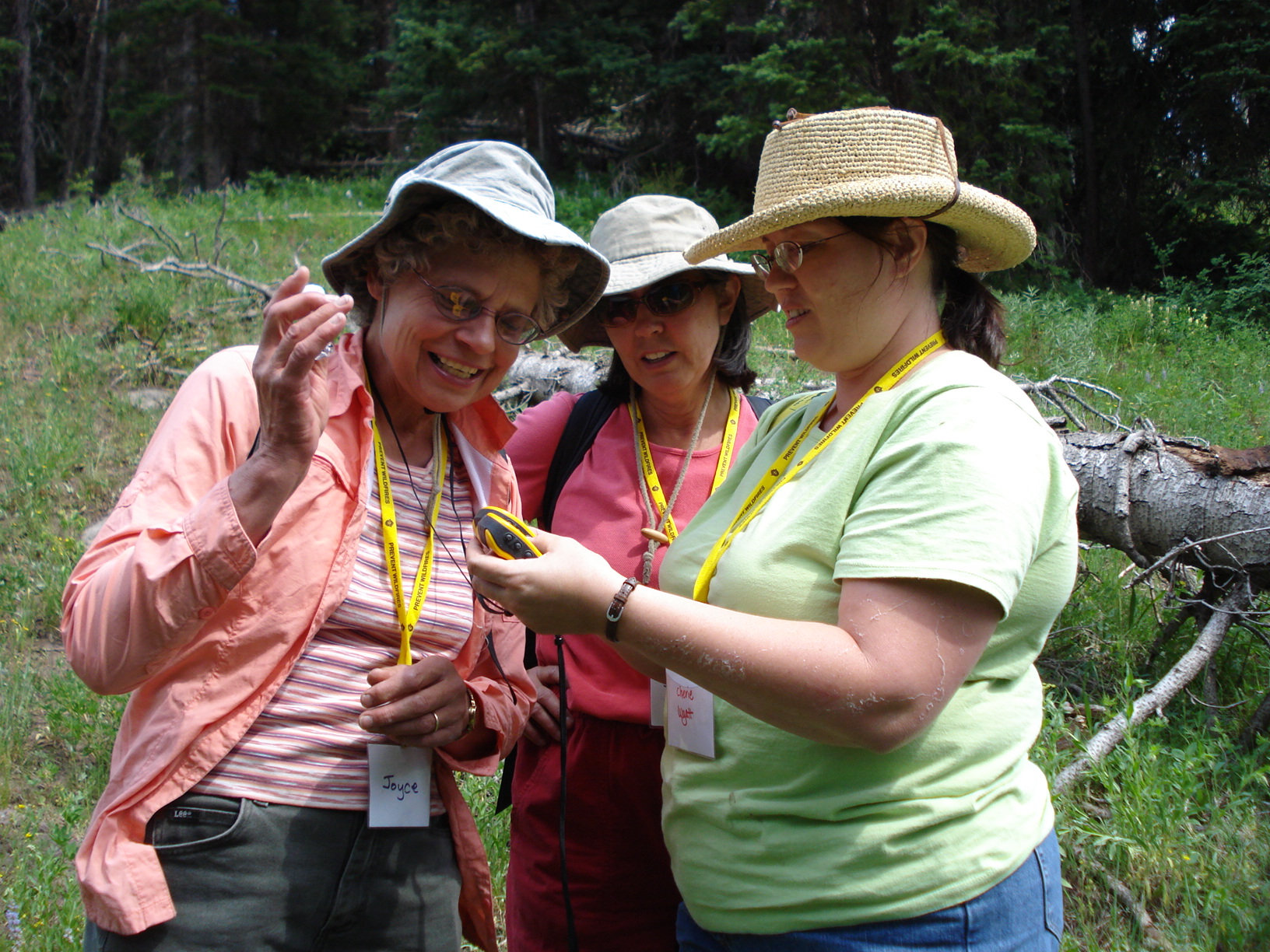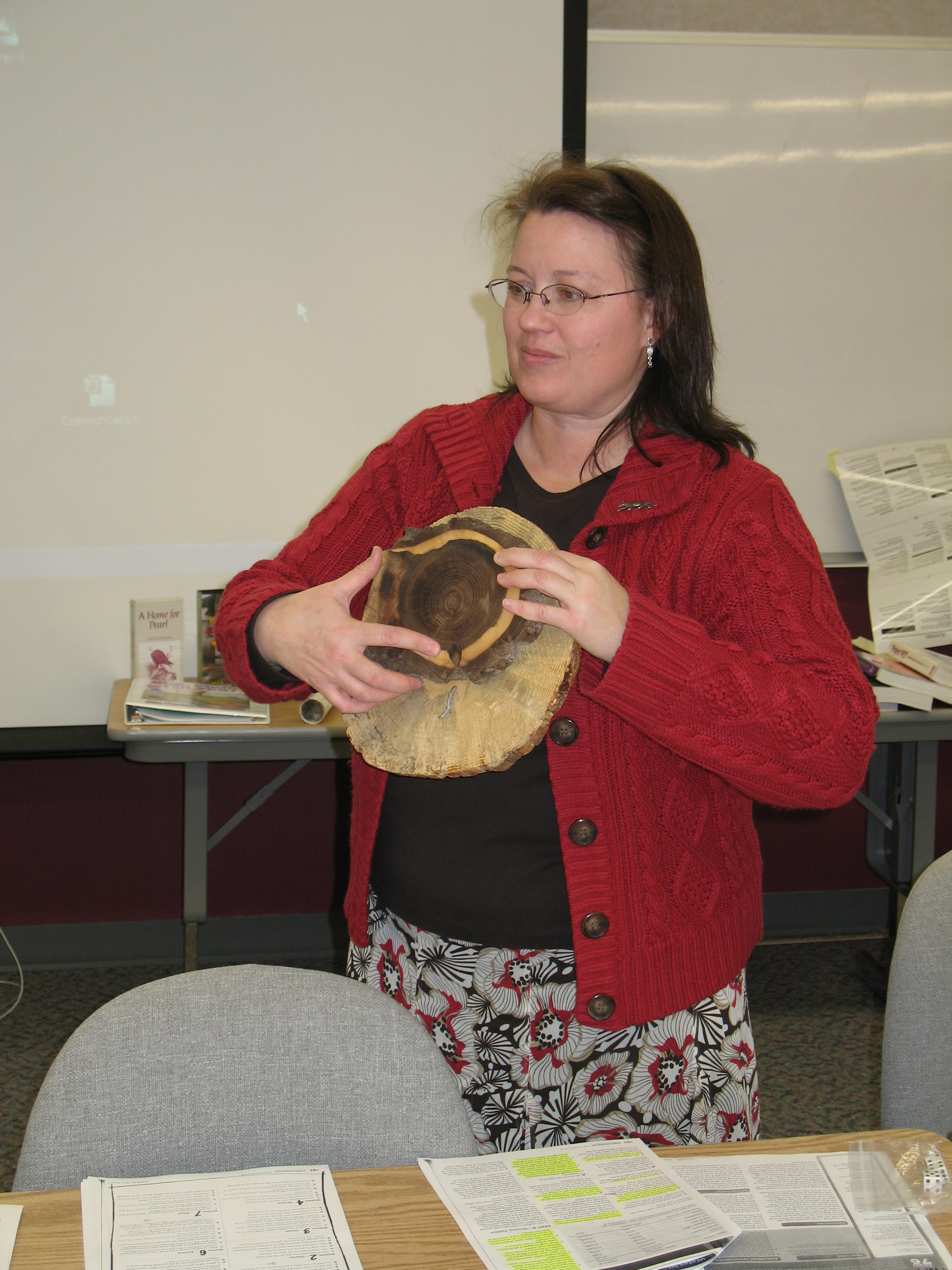This year has been quite a change for me as I started teaching science at the high school level. Prior to that, I had taught middle school science my entire career. Long ago, I decided to attend professional development workshops that looked interesting to me regardless of the level of their advertised target audience. I’m always enriched  by the opportunity to interact with teachers of different levels, both grades below and above the ones I teach. At these workshops, I’ve often witnessed elementary teachers benefiting from learning more content and secondary ones being reintroduced to methods and tips they had forgotten about—such as utilizing the magnetic property of blackboards for displaying and manipulating instructional materials! I’ve rarely been to a workshop that didn’t provide even a little activity I could modify for use in my classroom, motivation to try something new, or a challenge to learn more difficult content.
by the opportunity to interact with teachers of different levels, both grades below and above the ones I teach. At these workshops, I’ve often witnessed elementary teachers benefiting from learning more content and secondary ones being reintroduced to methods and tips they had forgotten about—such as utilizing the magnetic property of blackboards for displaying and manipulating instructional materials! I’ve rarely been to a workshop that didn’t provide even a little activity I could modify for use in my classroom, motivation to try something new, or a challenge to learn more difficult content.
One of the first decisions I made in my new high school assignment was to NOT disregard my PLT PreK-8 curriculum guide. Do I use it differently? Of course, but it is still a valuable component to my teaching repertoire of resources.
As a high school teacher, I expect more in-depth content knowledge and higher-level reasoning skills from my students. However, I appreciate being able to modify and use many of PLT’s PreK-8 student pages as a jumping off point for lessons. I often shorten activities and use them as a five- to ten-minute introduction to a more in-depth lesson. It can be a fun way to review the basic topics we’ll spend the day discussing. It’s also especially helpful to special education students, English as a second language learners, and those kids who require a light reminder.
Below are a few of my favorite PLT PreK-8 Guide activities, along with a few tricks for enhancement with older students.
Activity 25: Birds and Worms. My biology students enjoyed going outside to experience the important survival strategy of camouflage. We complicate the math by counting the yellow, green, and red pasta in an unopened bag and use those numbers to calculate the percentage of each color found in each round. The students are amazed at the results because they think they are older and therefore smarter, and can see all the colors pretty easily
 Activity 76: Tree Cookies. I use tree cookie samples from several native species and have the students look for adaptations that enable each tree to survive in its particular ecosystem.
Activity 76: Tree Cookies. I use tree cookie samples from several native species and have the students look for adaptations that enable each tree to survive in its particular ecosystem.
Activity 44: Water Wonders. My freshmen Earth science students did this activity to refine their understanding of the water cycle, especially where water is stored and where it is ephemeral. They worked independently during the stations and in small groups to determine all of the possible routes to each station. In contrast to a typical classroom discussion, all students participated fully in the debriefing discussion because they were engaged in the activity and understood the concepts.
One of my favorite PLT secondary modules is Exploring Environmental Issues: Focus on Risk. This module is designed to help students identify and evaluate risks that are part of modern life. As a high school teacher, I discovered that the Focus on Risk activities need little or no modification for use with higher level students. Here are a few examples of how I have integrated the Focus on Risk module into my high school classroom lessons.
Activity 2: Things Aren’t Always the Same. I use the “Environmental Risk Survey” Student Page as an engaging way to begin class. One of the statements that relates to that day’s learning is put on the board, and students write down their position along with supporting evidence. While I take roll, the students are thinking and preparing themselves for a short discussion with their classmates. As students discuss their evidence with classmates, several things happen. They often identify personal bias, or questions, or areas where they don’t have enough personal knowledge to form an opinion on the given topic. I use all of these outcomes to ensure student engagement and drive instruction. More importantly, my goal, like the goal of every science teacher, is met when student thinking in the classroom mirrors the thinking process of working scientists, namely, backing up claims with evidence, debating and dissecting that evidence for its merits and failings, and evaluating the evidence over time.
Activity 3: Chances Are… Understanding Probability and Risk, and Activity 4: Risk Assessment: Tools of the Trade. By teaching students how to make and utilize tree diagrams, toxicity testing and epidemiological studies, they are able to understand and evaluate data for future decision making situations. This is a foundation that can be built upon and utilized in every science course a student will take in his or her high school career. “Risk Assessment: Tools of the Trade” has a student page on the risk of consuming saccharin, perfect for biology or health class.
Activity 5: Communicating Risk.
This activity guides students through thoughtful consideration of factors affecting the dissemination of risk information amongst experts, stakeholders, the media, and lay people. The content involved in this activity involves radon, which may be easily inserted into biology or chemistry class. Students analyze, write, and speak on sensitive issues. I like extending it to a mock press conference with students role-playing. How better to drive home that understanding science and science processes is vital to all global citizens!
The subsequent activities include student pages on wildfires, earthquakes, volcanoes, tornados, hurricanes, floodplains, endangered and threatened species, electromagnetic fields, and chlorine. Clearly, there are risk activities for not only biology and chemistry, but also earth science and environmental science.
Just last month I attended another PLT workshop, this time to learn how to use PLT’s new “Biotechnology” supplement to the Focus on Risk module. While I am glad to be able to continue using my old friend, PLT’s PreK-8 PLT Guide, in certain situations, I am looking forward to new in-depth adventures with PLT’s Focus on Risk secondary module.
Cherie Wyatt teaches 9-12 science at Kiowa High School in Kiowa, Colorado. She is a 2008 National Project Learning Tree Outstanding Educator.


